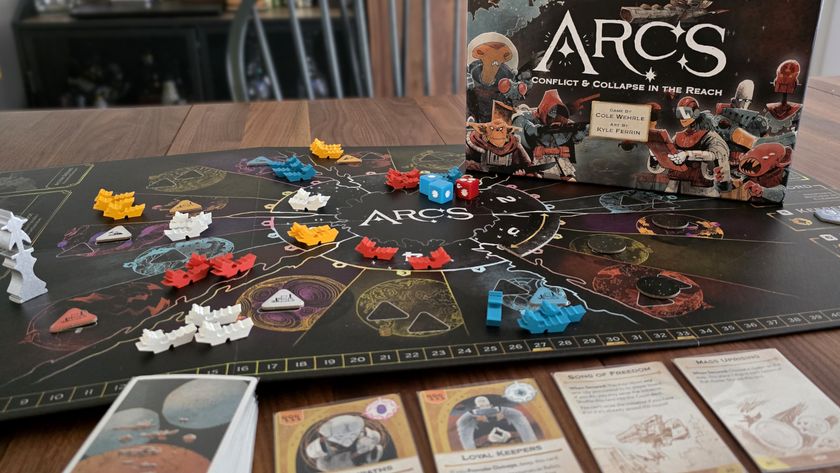The Wild Beyond the Witchlight is a D&D world where a bad mood could kill you
We chat with the project lead of The Wild Beyond the Witchlight, an adventure more bizarre than anything we've seen from Dungeons & Dragons before
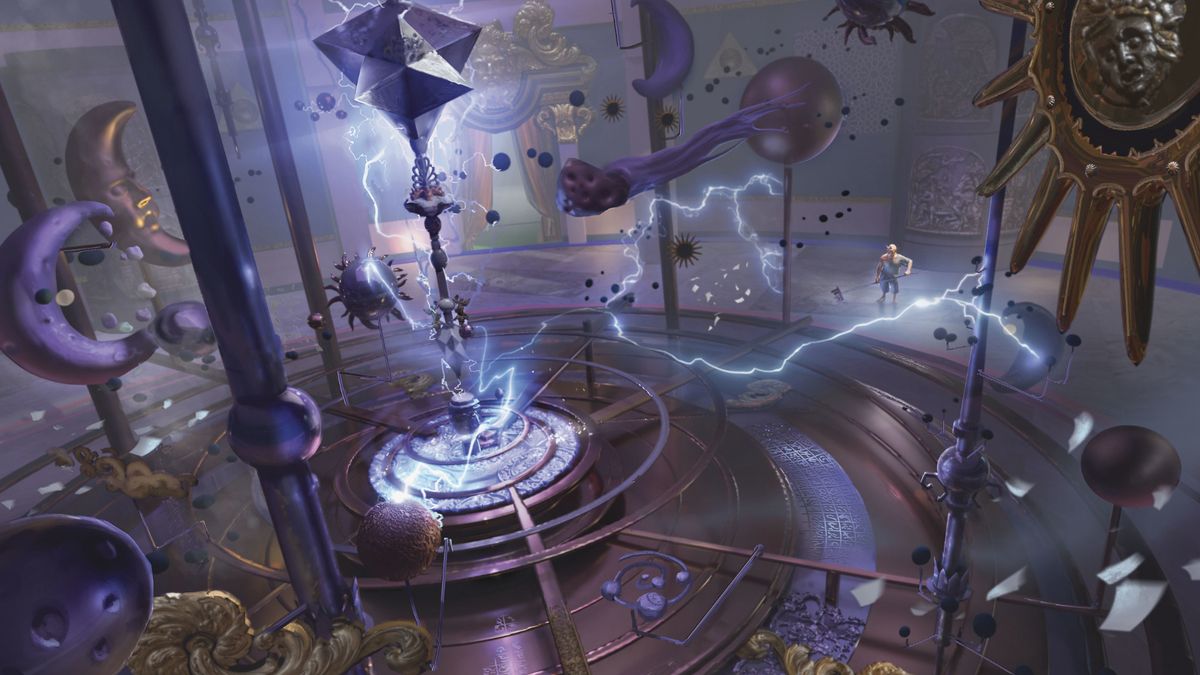
Most Dungeons & Dragons sessions go off the rails in one way or another, and The Wild Beyond the Witchlight embraces that weirdness. Tipping players headfirst into a parallel dimension with shades of Alice in Wonderland, 'odd' is the order of the day.
I had a chance to pepper The Wild Beyond the Witchlight project lead Chris Perkins with questions ahead of launch, and it seems that this book's setting - known as the Feywild - is stranger than anything we've seen from D&D so far.
Unhappily ever after
Although the Feywild has been referenced for years in the best Dungeons and Dragons books, this marks our first official adventure to that realm. As a counterpoint to the horror-tinged kingdoms seen during Van Richten's Guide to Ravenloft, it feels like a blend of Disney-esque wonder and something from the Brothers Grimm. Namely, it's defined by your mood.
"The Feywild is a plane where emotions have power," says Perkins. "The environment reacts to emotion, and creatures can use that to shape the environment around them. Archfey [powerful Feywild creatures] are particularly good at this, using emotion to create their own Domains of Delight."
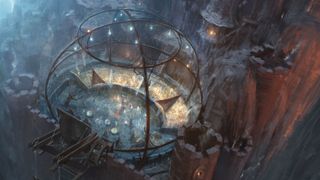
Prismeer is one such Domain of Delight, and it's where players will spend most of their time during the story. Split into three kingdoms called Hither, Thither, and Yon, it's a bizarre place where time moves differently and nothing is as it seems.
"In the Feywild, the whimsical and the eerie blend together. After all, fairy tales are as much cautionary tales as they are escapism."
Endelyn Moongrave, a member of the book's villainous Hourglass Coven, is a good example of this. Perkins describes her as a tragic figure that represents the future, so she knows what's coming - and has all but stuck her head in the sand as a result.
Sign up to the 12DOVE Newsletter
Weekly digests, tales from the communities you love, and more
"Endelyn has foreseen her own doom and the doom of her coven," Perkins reveals, "so everything she does is meant to distract from that inevitability and postpone it for as long as possible. She wears black garb because she’s mourning - for herself, mostly. She’s definitely a player in the 'twisted fairytale' that is The Wild Beyond the Witchlight, but one who knows she’s not long for the stage."
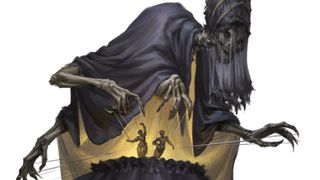
This fear has twisted Endelyn's home into a reflection of her need to be in control.
"Prismeer has several big locations that serve as set pieces for the story, the mountaintop theater of Motherhorn among them. Each location reinforces a particular theme, color scheme, and character. For example, the Orrery of Tragedies is a lightning-powered device that enables Endelyn Moongrave to glimpse the future, but more importantly, it reinforces Endelyn’s love for mechanical contraptions. You see them everywhere in Motherhorn: cranes, puppets, ornithopters, and mechanical dresses. These elements symbolize Endelyn’s desire to orchestrate and control the world around her."
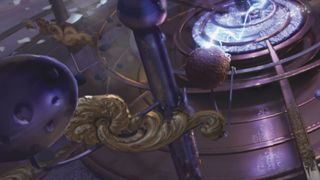
"This cylindrical chamber houses a whirring contraption bolted to a revolving metal disk that serves as its base. Metal spheres and sickles are attached to the ends of long metal arms that sweep back and forth, clicking loudly and rhythmically like the hands of a giant metronome. The apparatus is inlaid with characters from strange alphabets, and smoky wisps in the shapes of these letters rise from the contraption as it revolves. The whole devices hums and crackles with lightning."
That approach helps give Prismeer - and the Feywild, by extension - a unique edge. As Perkins explains, differentiating it from other fantasy settings seen across the best tabletop RPGs was a hurdle when creating The Wild Beyond the Witchlight.
"One of the challenges of creating a Feywild adventure is making it feel different from wondrous places in the natural world. Since all D&D worlds feature magic and monsters, the Feywild needs to go beyond the wondrous and lean into the bizarre and surreal by playing up its weirder or more mysterious aspects. For example, time and distance are mutable in the Feywild, so we tried to mess with that a bit. Also, the denizens of the Feywild need to behave differently from the denizens of the Material Plane. They follow their own rules, in a way."
However, that generates issues of its own. To be precise, there's a fine line between 'surreal' and ridiculous. Lean too far and you risk breaking immersion and alienating your players.
Twisted tales
"The Feywild can’t be so bizarre that it becomes unintelligible or unrelatable," Perkins says. "One of the things we tried to do was give Feywild creatures relatable motives while hammering out three 'rules' of the Feywild that most of these creatures abide by: the rules of hospitality, ownership, and reciprocity. In doing so, we hope to teach players something unique about the Feywild while still making a place they care to explore."
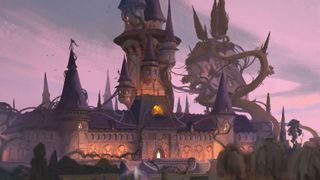
The Palace of Heart's Desire is the culmination of that effort. Sitting in pride of place at the very center of Prismeer, it's an impossible place with towers held up by beanstalks. Perkins points out that it's like a distortion of the oh-so Gothic Castle Ravenloft from Curse of Strahd Revamped. To be precise, it's "more of a fairytale palace from a Disney movie than a brooding monstrosity from a Hammer film."
That extends to gameplay. A lot has been said about how players can avoid combat in favor of more peaceful solutions, and we've been promised that "roleplaying opportunities abound" in the Palace. Indeed, it’s a place where the characters "can learn the true story behind Zybilna, the archfey of Prismeer, and decide whether or not to help her."
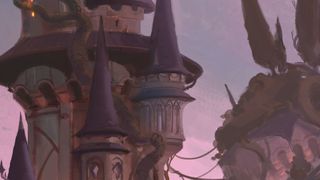
"A twilit palace emerges dreamlike from the clouds. A great marble tower ringed by delicate spires casts its shadow over the rooftops below. Another tower teeters nearby, torn from its foundations and help aloft by a coiled beanstalk. Monstrous vines cling to the palace walls and choke the promontory of rock on which it perches."
According to Perkins, playing with expectations like this is a feature of the book. The borderline-steampunk goblins running Endelyn's orrery epitomise this. Rather than being cowardly scavengers who are limited to attacking merchants like loincloth-clad highwaymen, they seem responsible for maintaining a complex technological marvel.
"We wanted to portray them sympathetically," Perkins reveals. "Like other Feywild creatures, they get swept up in events they can’t control and find themselves at the mercy of creatures much more powerful than them. Every D&D adventure gives us new opportunities to twist fantasy cliches and cast iconic D&D creatures in a new light, and I think we did a lot of twisting in The Wild Beyond the Witchlight."
We've only got a couple more weeks until we can see what that means for ourselves - The Wild Beyond the Witchlight launches this September 21.
Want something to keep you busy until The Wild Beyond the Witchlight turns up? Be sure to drop in on our guide to the best board games.

I've been writing about games in one form or another since 2012, and now manage 12DOVE's tabletop gaming and toy coverage. You'll find my grubby paws on everything from board game reviews to the latest Lego news.

